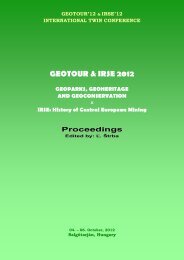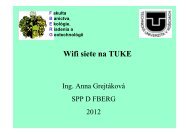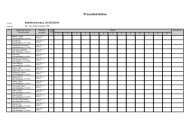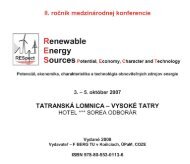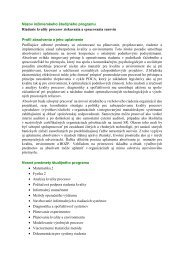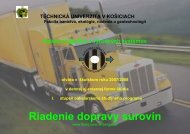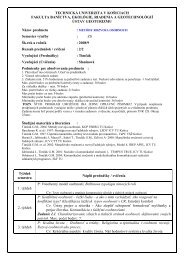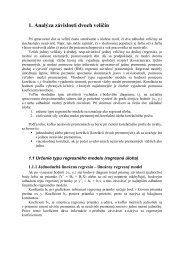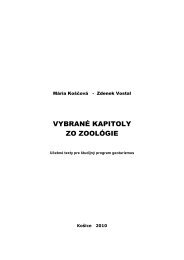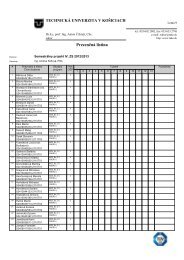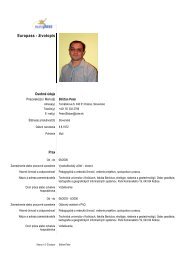GEOTOUR & IRSE 2012.pdf - Fakulta BERG - TUKE
GEOTOUR & IRSE 2012.pdf - Fakulta BERG - TUKE
GEOTOUR & IRSE 2012.pdf - Fakulta BERG - TUKE
You also want an ePaper? Increase the reach of your titles
YUMPU automatically turns print PDFs into web optimized ePapers that Google loves.
<strong>GEOTOUR</strong> & <strong>IRSE</strong> 2012<br />
900 000<br />
800 000<br />
700 000<br />
600 000<br />
500 000<br />
400 000<br />
300 000<br />
200 000<br />
100 000<br />
0<br />
Nights spent<br />
in medical<br />
hotels<br />
Nights spent<br />
by nonresidents<br />
in<br />
medical hotels<br />
Nights spent<br />
in medical<br />
hotels<br />
Nights spent<br />
by nonresidents<br />
in<br />
medical hotels<br />
Nights spent<br />
in medical<br />
hotels<br />
2001 2005 2010<br />
Nights spent<br />
by nonresidents<br />
in<br />
medical hotels<br />
Edelény<br />
Fig. 3 The nights spent by residents and non-residents in spa hotels (2001-2010),<br />
Source: own compilation based on KSH TEIR data<br />
Eger<br />
Mezőkövesd<br />
Tiszaújváros<br />
Debrecen<br />
Gyula<br />
Hajdúszoboszló<br />
Hévíz<br />
Sárvár<br />
Fig. 4 Nights spent in collective tourist accommodation per 1000 capita, 2010<br />
Source: own compilation based on KSH Geographical Atlas<br />
From among the other subregions of the North-Hungarian Region, Sátoraljaújhely Subregion<br />
belongs to the category of 2000 nights/1000 people (4 th figure). These tendencies are similar to<br />
those of other regions, but the average length of stay is really low compared with the other parts of<br />
Hungary. One reason must be the low number of spa hotels as tourists tend to stay longer term<br />
(more days) in these kinds of hotels. (5 th figure)<br />
19



